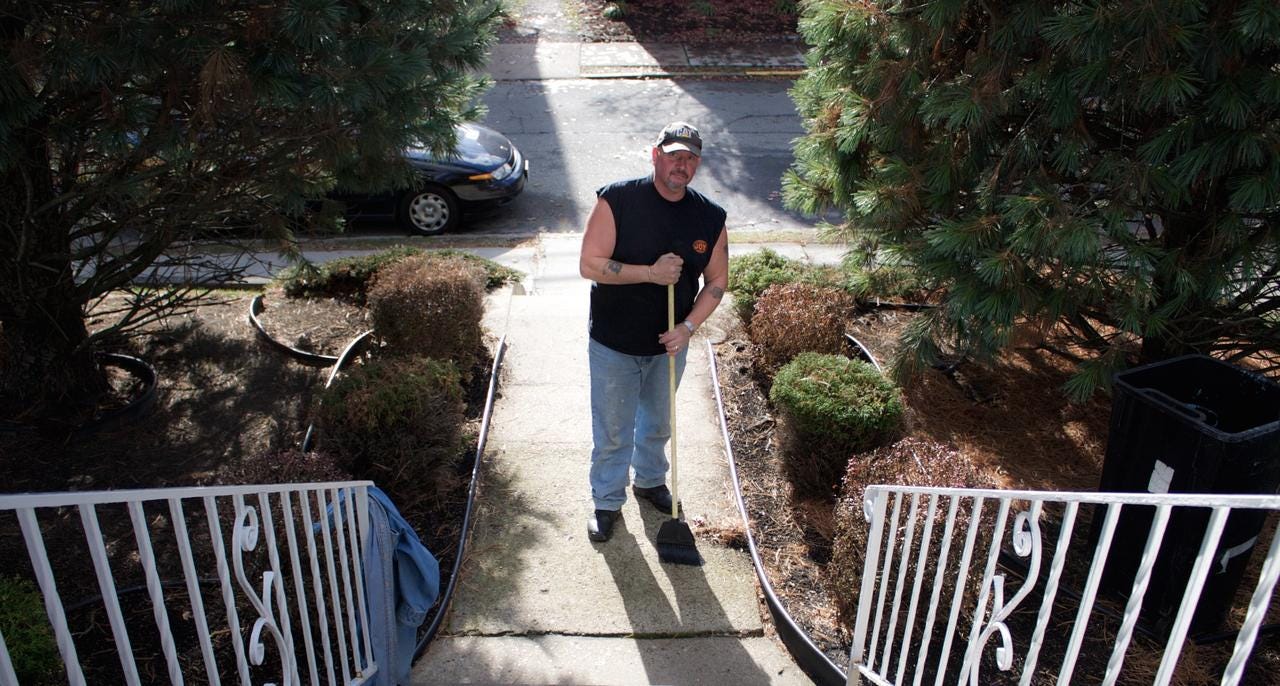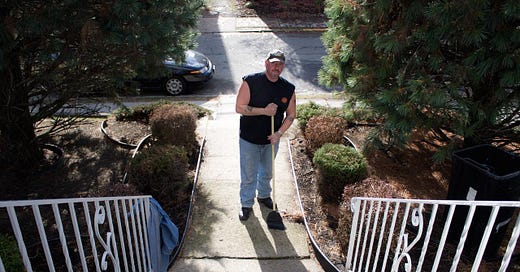The Brotherhood of Recovering Addicts
A year inside a pair of small-town boarding houses where a battered band of brothers are the only thing keeping each other alive.

Chester Biswick is a boulder of a man, standing not quite as tall as his nearly six-foot frame allows, his shoulders like the curve of a river stone pressed into the mud. Blue-jean eyes and hands like meat mallets. Decades ago, his hands pilfered plump moonshine-soaked cherries from the pickle jar at the neighbors’ house. Ten-year-old Chester drank because it made him feel tingly, special. Booze joined him in the treehouse, where he slept to escape the shouts between his parents. In another life, Chester’s hands mashed faces. There were the bar brawls. The knife fights. Later those same hands clutched whiskey bottles, shaking so badly it took a pint of the stuff to steady his grip. Drink, vomit, drink again. Sometimes all that would come up was stomach acid. In that life, he watched two marriages collapse. Got two DUIs. For a time, he slept under picnic benches.
“There was nothing there for me anymore. I was basically drinking to kill myself for the longest time, because I just didn’t …
Keep reading with a 7-day free trial
Subscribe to Narratively to keep reading this post and get 7 days of free access to the full post archives.



